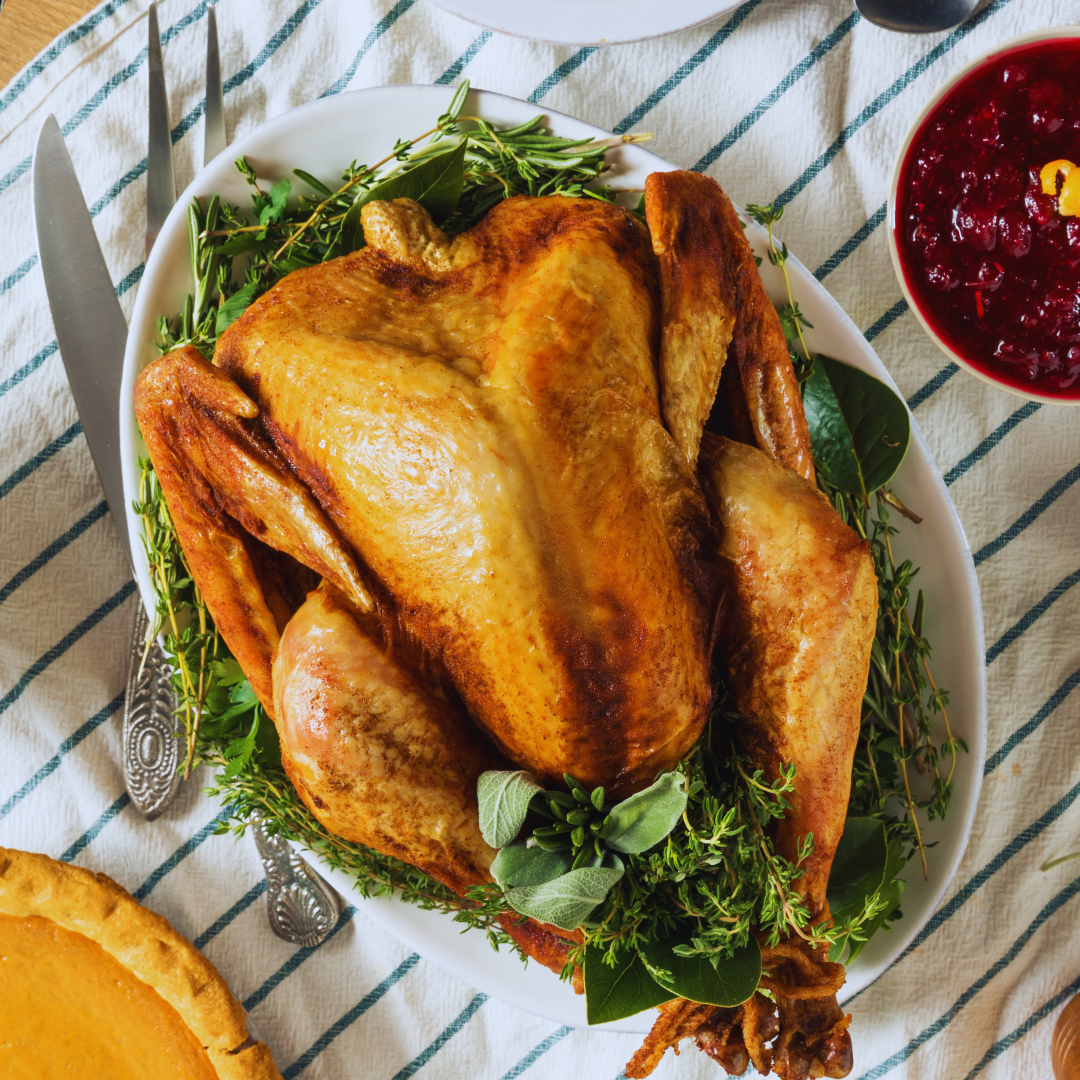
Holiday Turkey Tips for a Perfectly Roasted Bird
Cooking the holiday turkey doesn’t have to be a hassle. Here’s everything you need to achieve juicy, crispy perfection:
- Choose the Right Pan: Ditch the high-sided roasting pan, which traps heat and prevents even browning. A sheet pan with a wire rack allows heat to circulate for a perfectly crisped exterior. Add a cup of water to the bottom to prevent smoking—but avoid adding too much, as it can steam the bird and sog out the skin.
- Start Hot, Then Lower the Heat: Begin roasting at 450°F for 30 minutes to get that golden-brown color, then reduce to 300°F and cook for another 65-85 minutes. For a 12–14 lb turkey, it’s ready in under 2 hours. Want a faster cook? Try a spatchcocked (butterflied) turkey.
- Take the Temperature Regularly: Insert a meat thermometer into the thickest part of the breast midway through cooking, checking every 20-30 minutes. When it hits 150°F, remove from the oven—it’ll keep cooking on its own! Dark meat can handle a bit higher temperature (up to 190°F) without losing juiciness.
- Let It Rest: Once out of the oven, let the turkey rest for 30 minutes to an hour before carving. This essential step allows juices to redistribute, keeping each slice moist. Resist covering it with foil, which can make the skin go soft.
Follow these tips for a showstopping turkey, with crispy skin and juicy meat that’ll make your holiday feast truly memorable!
Ingredients
- 1/2 cup kosher salt
- 1 Tbsp. brown sugar
- 1 12-14 lb. Turkey
- 12 Tbsp. butter
- 1/4 cup sherry or red wine vinegar
- 2 Tbsp. honey
- 4 Tbsp. Worcestershire sauce
- 3 sprigs rosemary
- 3 each Garli Cloves
- 2 strips (2x1) orange zest
Servings: people
Units:
Instructions
- To dry-brine your turkey, combine ½ cup Diamond Crystal or ¼ cup plus 1½ tsp. Morton kosher salt with 1 Tbsp. brown sugar in a bowl, mixing well with your fingers. Pat a 12–14 lb. turkey dry with paper towels, then rub the salt mixture all over, including inside the cavity and any crevices. Place the turkey on a wire rack inside a rimmed baking sheet (or a V-shaped rack in a roasting pan). Chill, uncovered, for at least 12 hours or up to 2 days.
- After dry-brining, remove the turkey from the wire rack and, if needed, rinse the baking sheet and rack to remove any released liquid. Line the baking sheet with three layers of foil, then set the rack back inside. Place the turkey, breast side up, on the rack and tuck the wings underneath. Let the turkey sit at room temperature for 2–3 hours before cooking.
- Position an oven rack in the middle of the oven and preheat to 450°F. Gently loosen the skin over the turkey breast with your fingers. Spread 4 Tbsp. of room-temperature unsalted butter evenly under the skin on both breasts, then rub another 4 Tbsp. of butter over the outside of the turkey.
- Tie legs together with kitchen twine and pour 1 cup water into baking sheet.
- Roast turkey, rotating pan halfway through, until skin is mostly golden brown all over, about 30 minutes.
- In a small saucepan over medium heat, combine ¼ cup sherry or red wine vinegar, 2 Tbsp. honey, 4 tsp. Worcestershire sauce, 3 rosemary sprigs, 3 crushed garlic cloves, two 2x1" strips of orange zest, and the remaining 4 Tbsp. of room-temperature butter. Cook until the mixture is bubbling and slightly thickened, about 5 minutes. Reduce heat to the lowest setting and keep the glaze warm.
- Reduce the oven temperature to 300°F and continue roasting the turkey, brushing it with the warm glaze every 30 minutes. Add ½-cupfuls of water as needed to keep some liquid in the baking sheet. Roast until an instant-read thermometer in the thickest part of the breast near the neck reads 150°F (it will rise as the turkey rests), about 65–85 minutes more. The skin should be deep golden, shiny, and crisp. Transfer the turkey to a cutting board and let it rest for at least 30 minutes, up to 1 hour, before carving.
Recipe Notes
Share this Recipe

